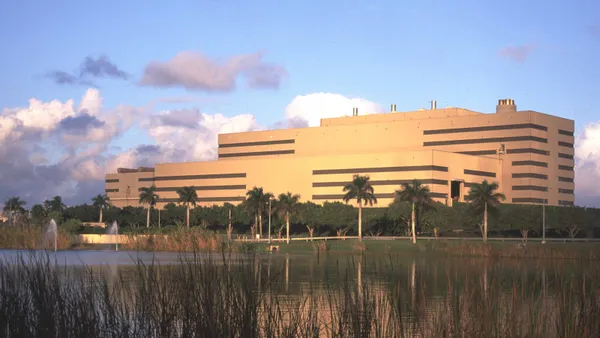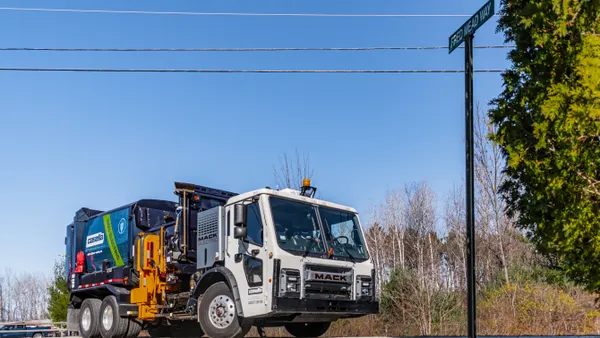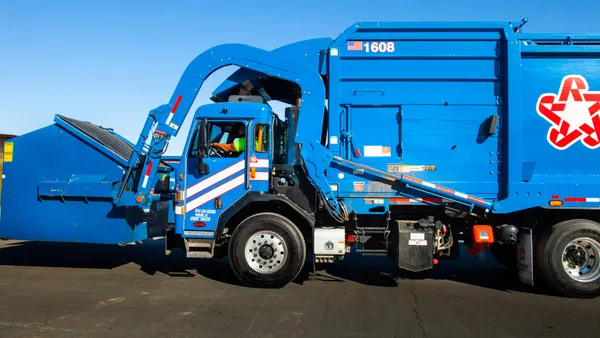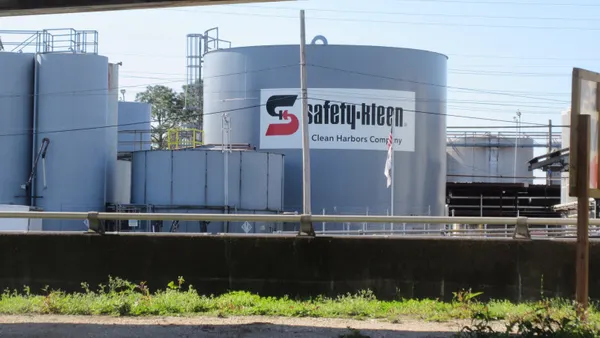Dive Brief:
- In a Monday op-ed calling waste-to-energy facilities "problematic," The Baltimore Sun editorial board said it is time for city officials and Maryland legislators to reconsider the subsidies given to Wheelabrator Baltimore, formerly known as BRESCO. The facility has received around $10 million in subsidies over the last six years.
- City and state officials are working to curb air pollution in the area. In an emailed statement, Wheelabrator Vice President of Environmental, Health & Safety Jim Connolly said the Baltimore facility operates "in accordance with all state and federal laws and regulations." Wheelabrator Baltimore produced 82% of the sulfur dioxide and 64% of the nitrogen oxides emitted in the city by smokestacks in 2014, according to EPA data and reported by The Baltimore Sun.
- A recent study conducted for the Chesapeake Bay Foundation by George Thurston of New York University's school of medicine concluded that the Wheelabrator Baltimore facility creates $55 million in health costs annually. The highest costs in that estimate come from mortality, chronic bronchitis and work days lost. In his emailed statement, Connolly said protecting public health and the environment are the company's highest priorities. To meet regulations and requirements, he wrote, there are "800 different compliance checks at Wheelabrator Baltimore alone."
Dive Insight:
The Baltimore facility began operating in 1985. In 2004 it got subsidies in a lower tier than it does now — until state legislators, including Baltimore's current Mayor Catherine Pugh, successfully moved waste-to-energy to a higher subsidy level. Then Gov. Martin O'Malley signed the legislation "after careful deliberation," but that has not kept community activists from consistently raising issues with the site.
WTE was controversial under O'Malley, and that remains true in Baltimore. Gov. Larry Hogan rescinded O'Malley's "zero waste" plan, which Hogan called "ill-conceived." However, Hogan appears to have taken a neutral stance on WTE, though his executive order concerning the "zero waste" plan does call for more research into WTE and anaerobic digestion.
Baltimore is officially considering its own "zero waste" goals. No formal plans or goals have been established yet, and it is yet to be determined if WTE will be a part of that. Advocates have urged the city to not renew its contract with the facility — but given the large volume of MSW from around the city and state that go to the Wheelabrator facility, it is unclear if Baltimore could achieve "zero waste" without sending some material to the plant. In the meantime, there is a plan to cut back on emissions from Wheelabrator Baltimore.
This case in Baltimore, where some communities are directly affected by their proximity to the WTE site, is a prime example for those who say WTE should not be included in "zero waste" goals or planning. While some cities, including New York, consider sending MSW to WTE facilities as diversion, some say it is a "false path" to achieving the goal. The negative health outcomes demonstrated by the Chesapeake Bay Foundation study will provide further evidence for opponents of WTE characterize the process as a dangerous one. Though proponents of WTE, especially newer facilities, believe it is still preferable to landfills until packaging design changes to enable more recycling.
Even though new WTE facilities in the U.S. have been rare recently, especially when compared to organics facilities, the debate is still important. There is no clear, industry-wide agreement on what "zero waste" means. As more communities embrace "zero waste" goals, it will be increasingly important to have a clear message about what those goals mean, and how they are to be achieved — or else stakeholders risk losing public buy-in.













